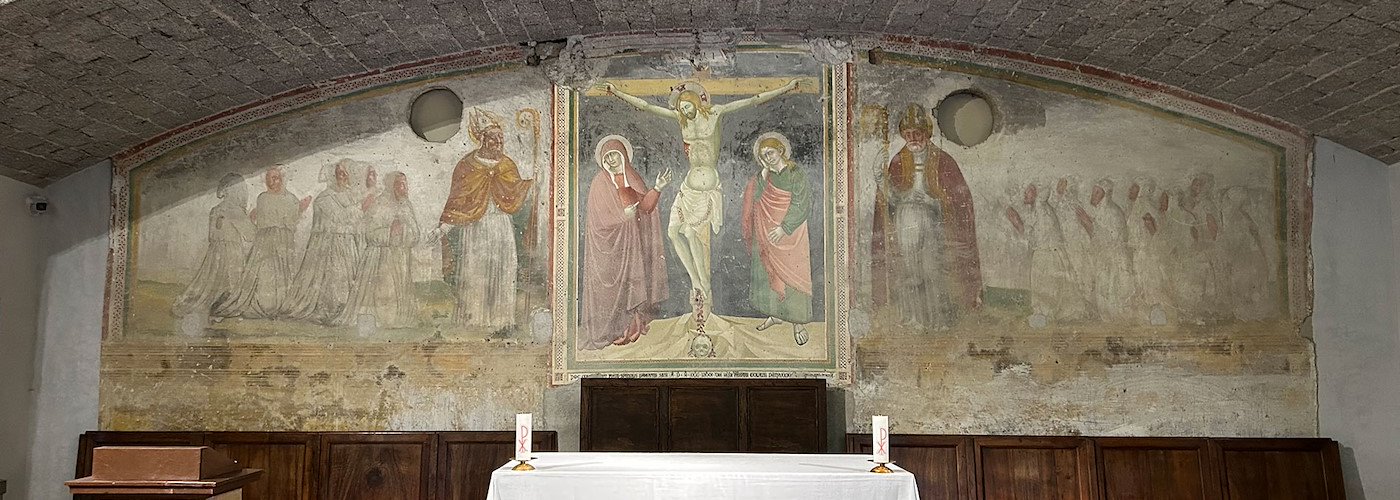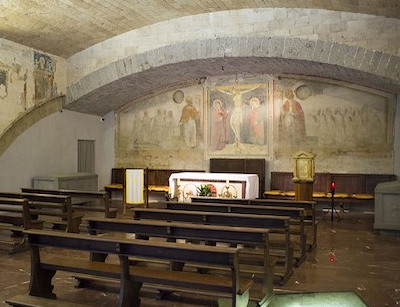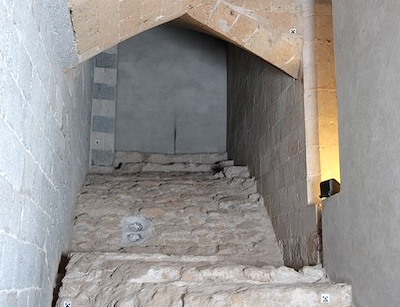
The crypt
Initially, the Duomo ended with a semi-circular apse, which, however, soon showed signs of instability. When Lorenzo Maitani arrived in Orvieto to manage the Duomo construction works (1308-1310 circa), he demolished that apse and replaced it with a quadrangular tribune, under which he obtained a space that became the oratory. This oratory was accessed from inside the Duomo, and in particular from the transept, through two flights of stairs. In 1357, it was converted into a burial place, and its walls were frescoed. Unfortunately, the frescoes were almost completely lost.
Fun facts:
- The frescoes that still exist today depict two saints and a mid-14th-century Annunciation scene. Opposite the entrance is the Crucifixion by Cola Petruccioli, commissioned by Savinus Vannutii in 1380. It depicts Jesus on the cross and Mary and St John standing nearby. The frescoes on the sides depict St Constantius and St Britius praying with their brothers.
- In 1971, the Opera del Duomo decided to start the works for the Bishops’ Crypt, where the bishops of Orvieto would be buried.
Image gallery
Address
Piazza del Duomo, 05018 Orvieto
Opening times
The crypt is open only on special occasions, in particular, to celebrate the Eucharist with groups.
Last update: 14/03/2025, 16:16

 ITA
ITA



